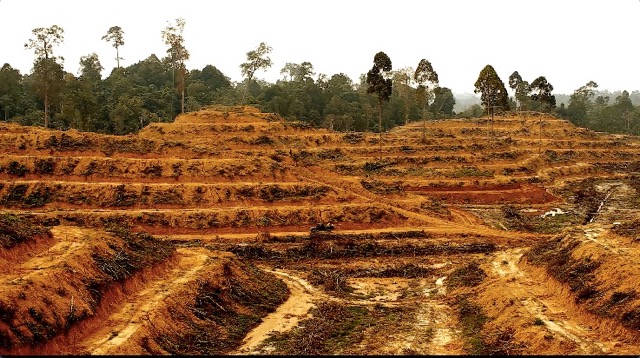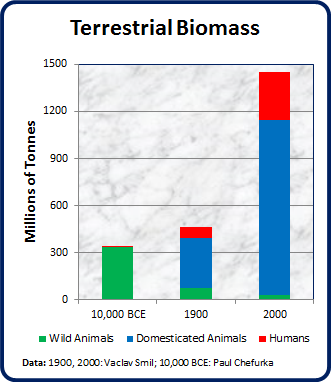 Did you know that humans make up just 0.01% of all living things on our planet? Yet we are responsible for the loss of 83% of wildlife and 50% of plants!
Did you know that humans make up just 0.01% of all living things on our planet? Yet we are responsible for the loss of 83% of wildlife and 50% of plants!
Let us think about this for a minute...
- 82% of life on Earth are plants
- 13% are bacteria, and
- 5% are all others (insects, fish, mammals, and the rest). Of this 5%, 0.01% are humans.
This is why scientists are calling this era the "Anthropocene Age" where human activity is directly impacting the environment. This is an age defined by nuclear activity, pollution by plastics, and the spread of domestic chicken. In fact, of all mammals on Earth today, 60% are domestic animals, 36% are humans, and only 4% wild animals!
The Human Footprint

Along with pollution and poaching, the numbers of many species have been shrinking. Why? Well, it turns out that lands set aside as safe zones are not as protected as they should be.
Recent studies have discovered that one-third of the world’s protected areas suffer from a shocking amount of human activity. In fact, over 2.3 million square miles (6 million square kilometers) are classified under “intense human pressure."
Researchers have found that despite laws stating that the area is protected, people still intrude onto these areas. Roads are being built, mines are being dug, and the logging of trees still continues in the “protected” areas. Grazing and farming require clearing the land and getting rid of all wildlife around.
The Effects Of Overpopulation
 The reason for this widespread development is the increase in the human population, which now stands at 7.6 billion!
The reason for this widespread development is the increase in the human population, which now stands at 7.6 billion!
As our human population increases, there are more people who require the same needs for survival, such as food, water, and shelter. This leads to more development of cities and other infrastructure, which require resources and land to build. These resources and land are being pulled from the “protected” reserves, and are hence shrinking the habitats for the remaining wildlife.
Unfortunately, governments lack funds and do not enforce laws needed to protect the animals from harm. Despite countries agreeing to the Convention on Biological Diversity (which states that all countries should focus on conservation efforts), they have allowed human activities to continually push out the native wildlife.
Indeed, over 90% of the world’s natural protected areas have at least some degree of human activity that hurts the environment. In fact, the only areas that are not impacted are the ones useless for human development, like the Arctic tundra in Russia and Canada.
If nothing is done to solve this issue, many species will disappear faster than before; scientists estimate around thirty percent will go extinct in fifty years. However, now that this issue is brought to light, we can learn that well-funded and well-managed reserves are key to protecting wildlife.
Sources: BBC, Guardian, Inhabitat, Saylor.org







